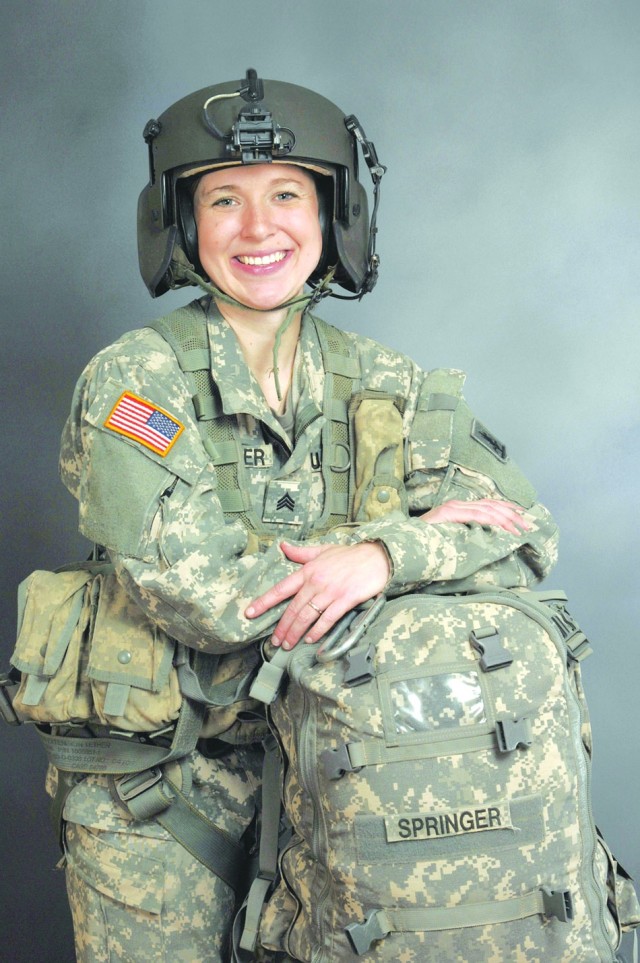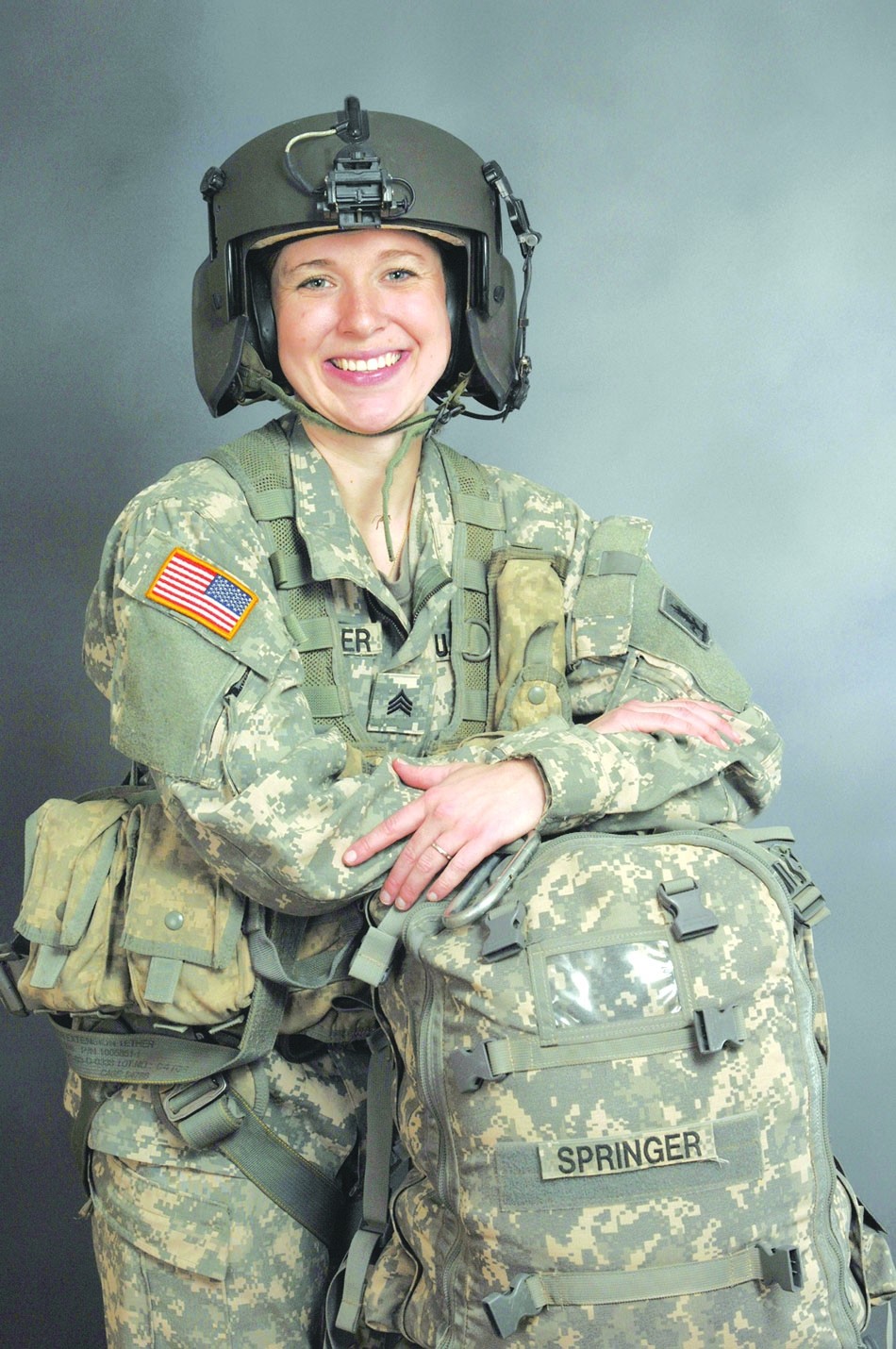The DUSTOFF Association, an organization for veterans who served in or supported aeromedical evacuations, presented its annual awards during ceremonies at the AMEDD Museum at Fort Sam Houston, Texas.
DUSTOFF Aviator of the Year is Chief Warrant Officer 4 Bart Knies of the 2nd Battalion, 227th Aviation Regiment at Fort Carson, Colo.
DUSTOFF Medic of the Year is Sgt. Heather Springer of the 2nd Battalion, 135th General Support Aviation Battalion (GSAB), Nebraska National Guard.
DUSTOFF Crew Chief of the Year is Sgt. Brendan Fergus of the 5th Battalion, 158th GSAB at Katterbach, Germany.
DUSTOFF Rescue of the Year was performed by Chief Warrant Officer 2 Monica Narhi, Chief Warrant Officer 2 John Russell, Staff Sgt. Peter Rohrs and Spc. Kelton Glorfield of the 3rd Battalion, 82nd GSAB at Fort Bragg, N.C.
Springer earned the medic honor after rescuing two wounded Soldiers under fire on July 15, 2007, an action that earned her the Bronze Star Medal for Valor. She said she was beginning to treat one Soldier's injured foot when, "somebody grabs me from behind and throws me on the ground. I look up at him - what is going on' And he said, 'We're taking small arms fire.'"
After placing that patient on a litter, Springer ran to the second casualty and treated his abdominal wound. While returning to the first patient, the enemy fire suddenly became intense.
WON'T BE LEFT BEHIND
Afraid the aircraft would have to take off, she grabbed four Soldiers to be litter bearers.
"On the count of three, we're going to lift and then we're going to run - run as fast
as we can, but don't drop this guy," she told them.
She loaded the patient, then saw that the second casualty was being brought to the aircraft, so she also got him aboard. After delivering the patients to a hospital, the crew was called back for a third casualty, who was loaded and evacuated without incident.
TAKE CHARGE
"It's so interesting to be in that situation because I'm not a confrontational 'I'm going to tell you how it is' kind of person. But I guess when you get in the situation and they look to you - you're the flight medic," Springer said.
"They always call us their angels. You get off the aircraft and (they) need you so badly. They look to you to tell them the right thing to do," she added.
Springer joined the Army after her applications for nursing school were denied.
During medic training, she was notified that her reapplication was accepted. So she enrolled in the University of Nebraska Medical Center's nursing school, but a month later came the notice that she would deploy with an air ambulance unit to Balad Air Base in Iraq.
She recorded 350 combat flying hours on about 200 missions.
"I think about it a thousand times a day," said Springer, who has returned to nursing school. "I see the faces and tasks and patients. And sometimes, when I'm driving down the road, I'll think about a specific mission or a specific patient that I had who did not make it. I wouldn't say that they haunt me, but I carry them all of the time."
The mission cited as Rescue of the Year took the crew from 3rd-82nd GSAB into the mountainous terrain of northeastern Afghanistan on July 27, 2007. A Soldier with a gunshot wound to the neck needed immediate evacuation.
After diverting once because of enemy fire, the aircraft hovered 80 feet off the ground while Rohrs, the flight medic, rode the hoist down. They began to take fire again, but Rohrs located the casualty and the two were hoisted back up.
"We never got hit once, so that was great. It was the middle of the day, so we were an easy target," said Narhi.
"The medics are the ones who are incredible," said Narhi, a nine-year veteran pilot.
"They're awesome. We drop them off, and they're the ones who take the fire and are in the firefight. I've never felt a sense of purpose like I have in MEDEVAC."
The wounded Soldier recovered.
"He came running out a few months later to the Apaches," said Narhi. "He just saw a helicopter and he was excited."


Social Sharing